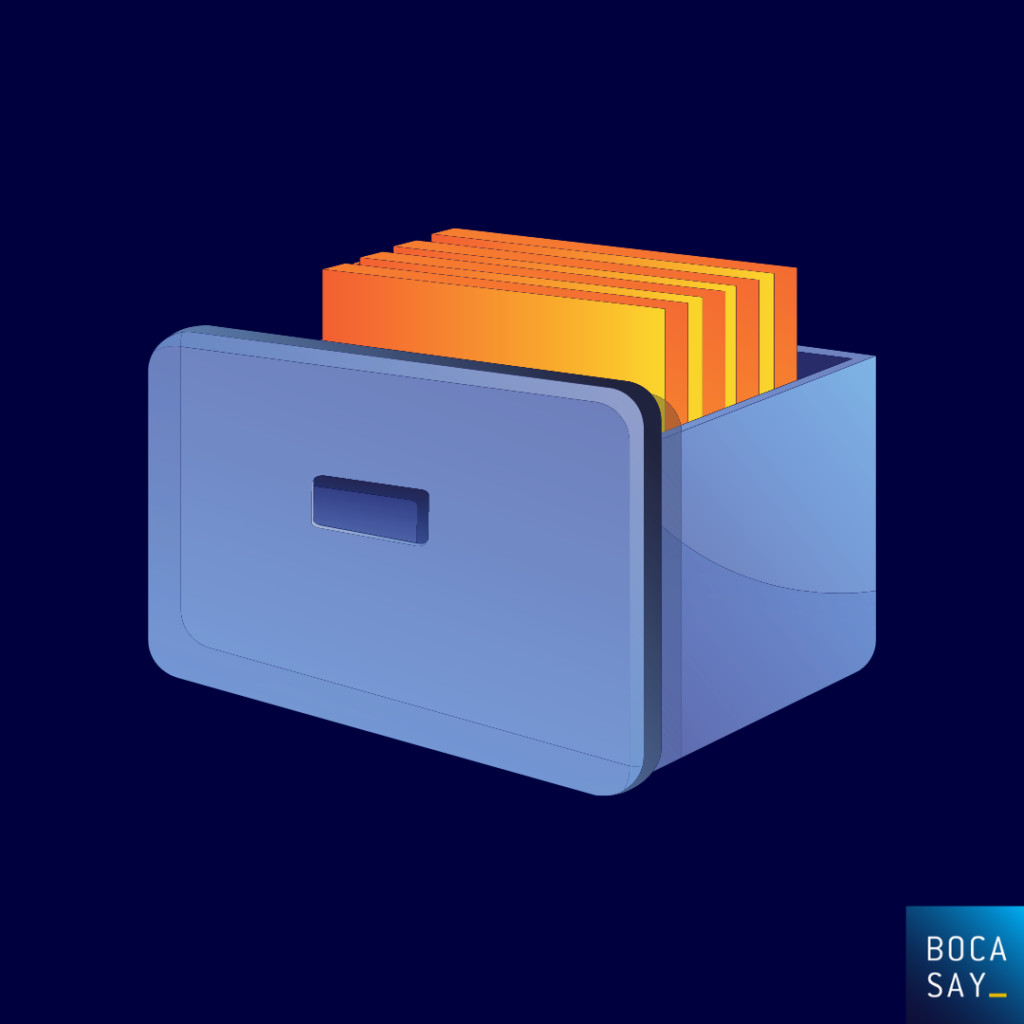How to Store Big Data
The demands of Big Data analytics have led to a dramatic shift in data storage from the more scalable traditional storage networks such as object storage, NAS, and data lakes. Big Data now requires massive storage.
Big Data storage management is a practice that we are exposed to on a daily basis at Bocasay, your Vietnam development center. In this article, we will detail the main methods of Big Data storage.

What is Big Data?
Big Data is a very large data set that grows exponentially over time. It is data that is so large and complex that none of the traditional data management tools can store or process it efficiently. In addition, the influx of data can be unpredictable, as the data sets are diverse and can be structured or unstructured.
Due to its size, Big Data is handled differently in terms of storage since the data is too large to be backed up and processed using traditional methods.
Technologies have made big data storage a core business. Companies like Google and Amazon have huge data centers that can store and process data with minimal latency to handle large user bases. All of this means that traditional USB drives and external hard drives are no match for Big Data.
While storage technology has advanced in terms of performance and scalability, there is still room for improvement. The potential of megadata storage technology can bring many benefits to the use and development of the technology.
Advanced data storage capabilities have the potential to transform businesses and companies across industries.
In addition, Big Data is a key component of advanced analytics, as it can extract valuable information, allowing companies to benefit from better decision making, increased accuracy, increased revenue.
What are Big Data Storage systems?
The Data warehouse
The data warehouse is the process of collecting and managing data from various sources to provide business information. Data warehouses are typically used to connect and analyze data from various sources, and are at the heart of any BI (Business Intelligence) system designed for data analysis and reporting.
There are 3 main types of data warehouse:
1. Enterprise Data Warehouse:
The enterprise data warehouse (EDW) is a centralized warehouse. It provides a decision support service across the enterprise and offers a unified approach to organizing and representing data. It also provides the ability to categorize data by subject and provide access based on those divisions.
2. Operational Data Store:
The Operational data store (ODS), is nothing but a data store required when neither the data warehouse nor the Online Transactional Processing (OLTP) systems meet the reporting needs of the organizations.
In ODS, the data warehouse is updated in real time. It is therefore widely preferred for routine activities such as storing employee records.
3. Data Mart:
A data mart is a subset of the data warehouse. It is specifically designed for a particular line of business, such as sales, finance, sales or finance.
The Data Lake
A data lake is a central storage repository that stores megadata from many sources in their raw and detailed form. It can store structured, semi-structured or unstructured data. This means you can keep your data in a more flexible format for future use.
When data is stored, the data lake associates it with identifiers and metadata tags for faster retrieval.
The terms data warehouse and data lake are very commonly used to refer to big data storage, but they are not the same thing.
A data lake is a large pool of raw data with no specific purpose. A data warehouse is a repository of structured and filtered data that has already been transformed for a specific purpose.
These two types of data storage are often confused, but the only similarity between the two is their ability to store data.
NAS:
Network Attached Storage (NAS) is a data storage device that is accessed by connecting to a network rather than directly to a computer. NAS devices contain processors and operating systems that allow them to run applications and provide the intelligence to easily share files among authorized individuals.
They provide easy access to data for multiple people, multiple computers, mobile devices and even remotely.
𝔼𝕩𝕡𝕖𝕣𝕥 𝕚𝕟 𝕠𝕗𝕗𝕤𝕙𝕠𝕣𝕖 𝕔𝕠𝕞𝕡𝕦𝕥𝕚𝕟𝕘, 𝕒𝕥 𝔹𝕠𝕔𝕒𝕤𝕒𝕪, 𝕞𝕖𝕖𝕥𝕚𝕟𝕘 𝕪𝕠𝕦𝕣 𝕕𝕚𝕘𝕚𝕥𝕒𝕝 𝕔𝕙𝕒𝕝𝕝𝕖𝕟𝕘𝕖𝕤 𝕚𝕤 𝕠𝕦𝕣 𝕓𝕦𝕤𝕚𝕟𝕖𝕤𝕤. ℂ𝕠𝕟𝕥𝕒𝕔𝕥 𝕠𝕦𝕣 𝕥𝕖𝕒𝕞𝕤 𝕠𝕗 𝕥𝕒𝕝𝕖𝕟𝕥𝕖𝕕 𝕕𝕖𝕧𝕖𝕝𝕠𝕡𝕖𝕣𝕤 𝕚𝕟 𝕠𝕦𝕣 𝕍𝕚𝕖𝕥𝕟𝕒𝕞 𝕠𝕗𝕗𝕤𝕙𝕠𝕣𝕖 𝕕𝕖𝕧𝕖𝕝𝕠𝕡𝕞𝕖𝕟𝕥 𝕔𝕖𝕟𝕥𝕖𝕣 𝕥𝕠 𝕙𝕖𝕝𝕡 𝕪𝕠𝕦 𝕕𝕖𝕧𝕖𝕝𝕠𝕡 𝕪𝕠𝕦𝕣 𝕓𝕦𝕤𝕚𝕟𝕖𝕤𝕤!
The Cloud:
The other method of storing large amounts of data is the cloud. If you’ve ever used iCloud or Google Drive, that means you were using the cloud to store your documents and files. With this technology, data and information is stored online and can be accessed from anywhere, without the need for direct access to a hard drive or computer. With this approach, you can store a virtually unlimited amount of data online and access it wherever you are.
Object Storage:
Object storage is a technology that treats data as objects. All data is stored in a large repository that can be distributed across multiple physical storage devices, rather than divided into files and folders.
Object storage systems contain blocks of data that constitute files or “objects” along with their metadata. Additional metadata is added to each object to make the data accessible without hierarchy. All objects are placed in a uniform address space. To find an object, users enter a unique identifier.
Object-based storage uses TCP/IP and devices communicate using HTTP and REST APIs. Metadata is an important part of object storage technology. It is determined by the user and enables flexible analysis and retrieval of data in the storage pool based on its features and properties.

Why do you need Big Data storage?
The need to store and process information has grown exponentially in recent years.
But megadata isn’t exclusive to large companies. Even smaller companies collect a lot of information from emails, social media interactions, sales and various other sources.
Regardless of the size of the company or industry, the data must be stored somewhere before it can be sorted and processed for analysis.
An ideal Big Data storage system stores an infinite amount of data. It must both:
- Provide fast random read and write access,
- handle different data models flexibly and efficiently,
- support both structured and unstructured data,
- keep data encrypted so that confidentiality can be protected.
Encryption and data protection is another crucial aspect for all businesses. There may be a misconception that data is private and secure within an organization. Yet, cyberattacks and hacks are common. Cybersecurity is a topic covered by Bocasay’s experts, find out more about our developer teams here.

